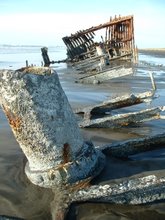The RAW Deal
Most digital SLR cameras record their pictures a jpeg (.jpg) images. However the language the camera uses to understand the image it sees before it translates it to jpeg is called the RAW data. There are differing opinions (among both professional and non-professional photographers) about whether or not it is better to shoot RAW or let the camera just translate it directly to jpeg or other common picture formats.
RAW contains a lot of information about the image so it consumes a lot of file space on the memory card and on the computer. RAW may also require special software and/or codecs so you computer can actually read the picture information. (I use the free UFRaw in conjunction with Gimp.) However, since RAW is how the camera sees the image information, it arguably provides more accurate images. Editing RAW images may also retain its information quality. Before you share RAW images, you have to translate them to jpeg or another format so others can view them. RAW is ideal for pictures to which you are planning to do some sincere quality editing.
Jpeg is a compressed picture format. As such a storage card can hold more pictures (with my Nikon D40, the highest quality .jpg photo is half the size of the RAW data). Conveniently, all computers can already read and edit jpeg files. However, since the jpeg is a translation of the camera information compressed into a smaller file, reduction in quality and loss of picture information may exist. Each time you edit jpeg the quality of the picture degrades. Jpeg format is great for everyday sharing of pictures and if your not really picky about the little intricacies of how the photo looks.
I used to be biased towards jpeg, but I've been playing with RAW a little bit more lately. I'm still torn on which one I like better. The jpegs come out great...and with some minor editing can look pretty nice. However I like the more natural color quality in the RAW images with which I've played. In my experience there editing raw is a little more labor intensive than the pre-adjusted jpeg images, but that is kind of the point with the RAW images. I also notice that RAW reveals a lot more detail and texture than the jpeg translations and its it easier to correct over and underexposed pictures in RAW.
I think the only way to tell which one you like better is to try them both. Below you can see a jpeg simple edit compared to a RAW (Nikon NEF) simple edit to see what you think. (Click the picture if you want to see more detail.)










No comments:
Post a Comment